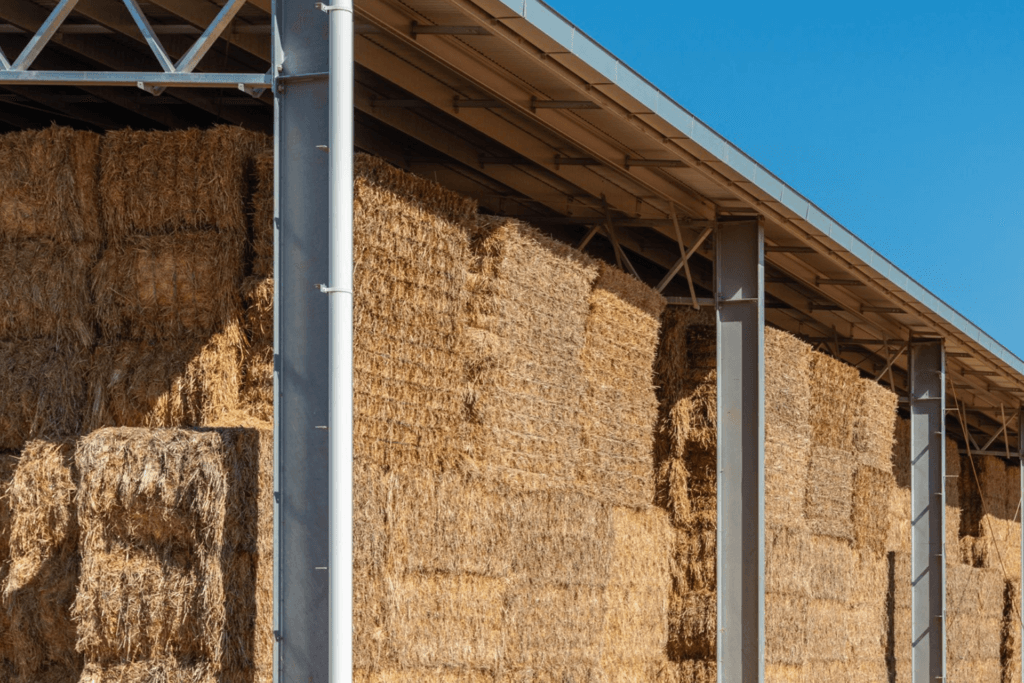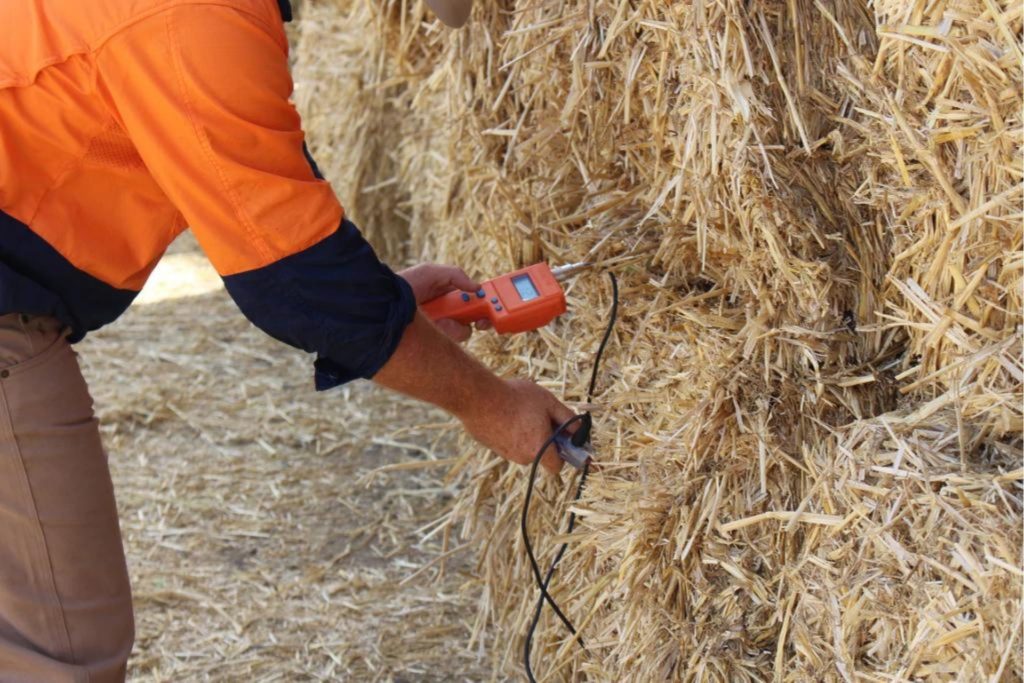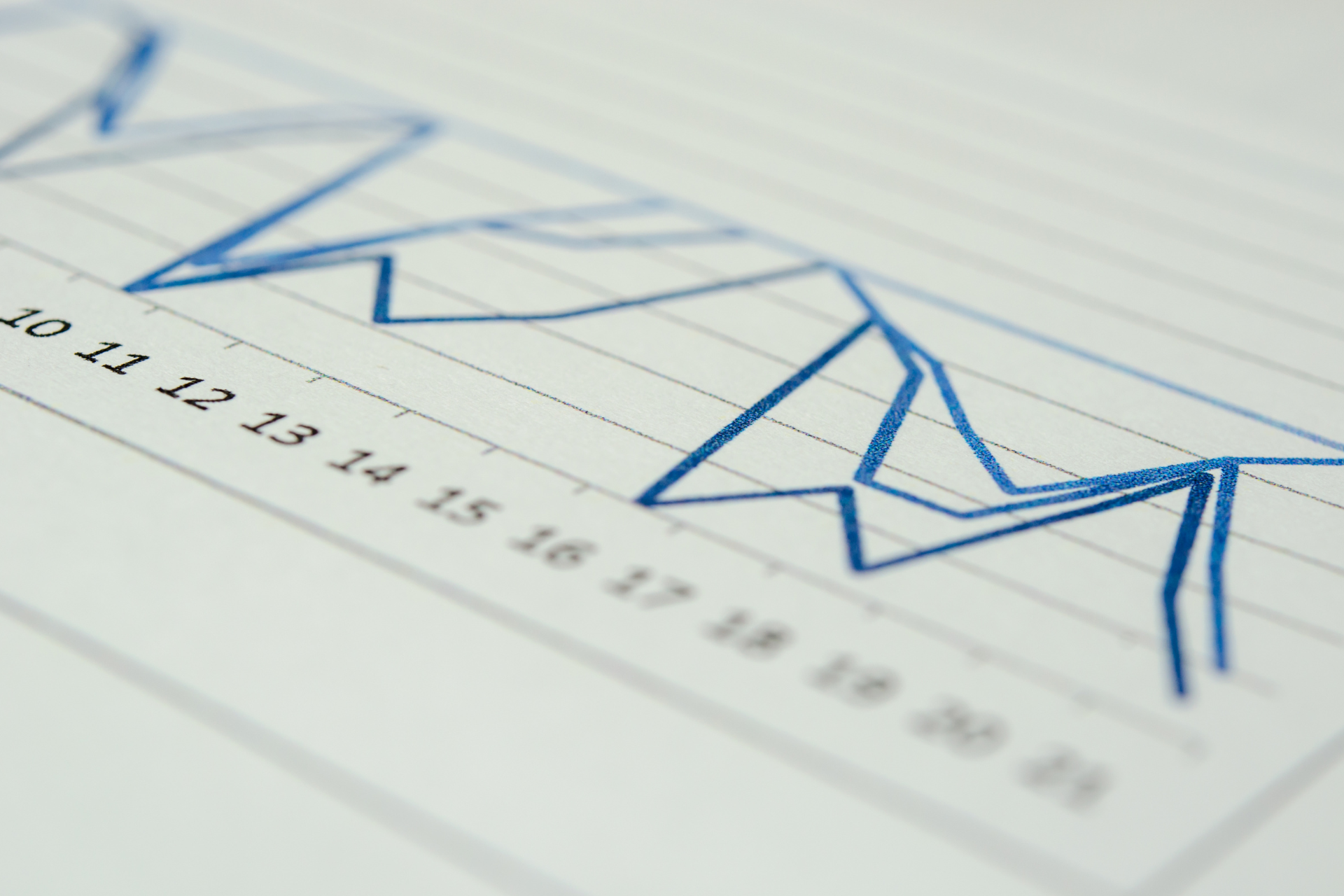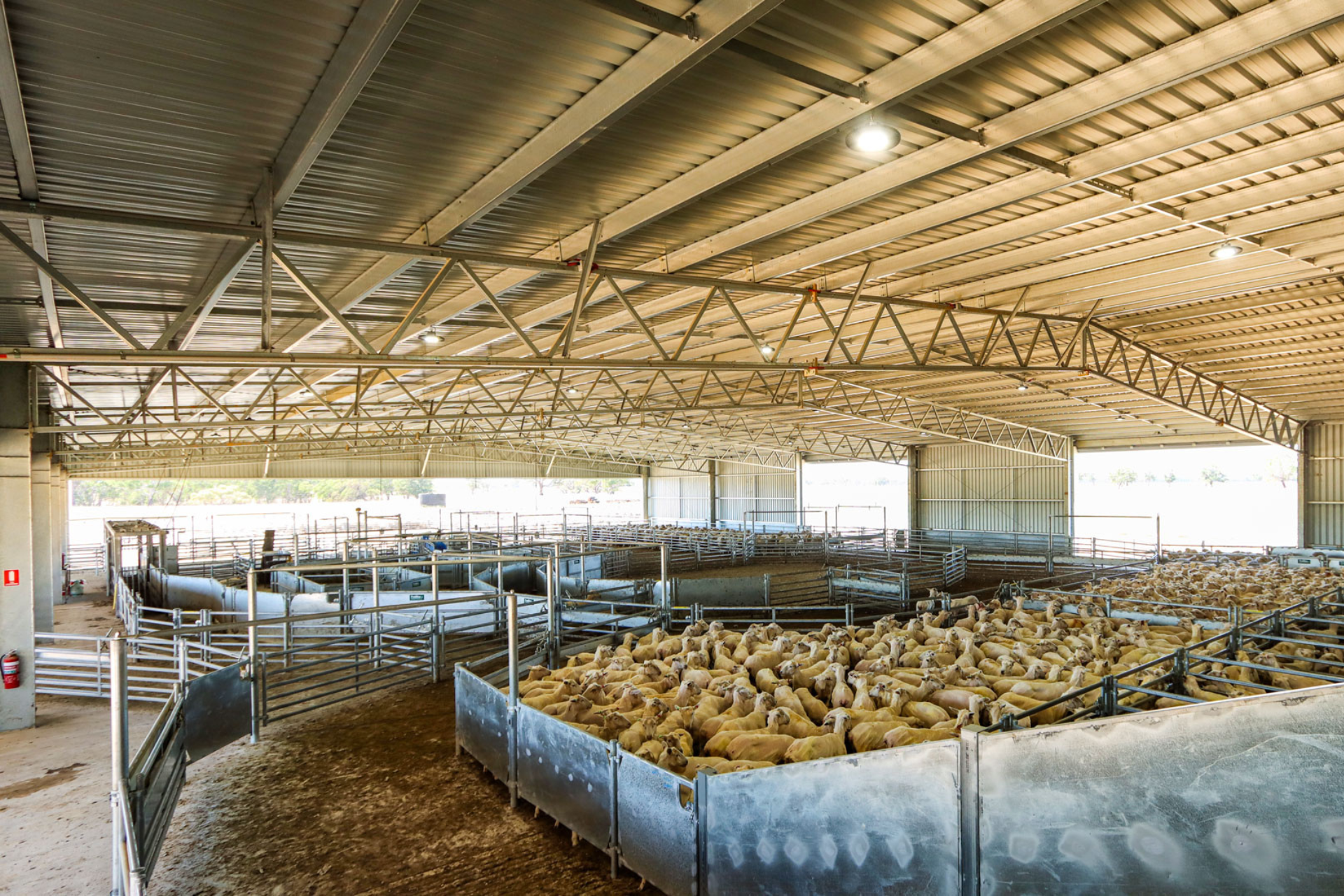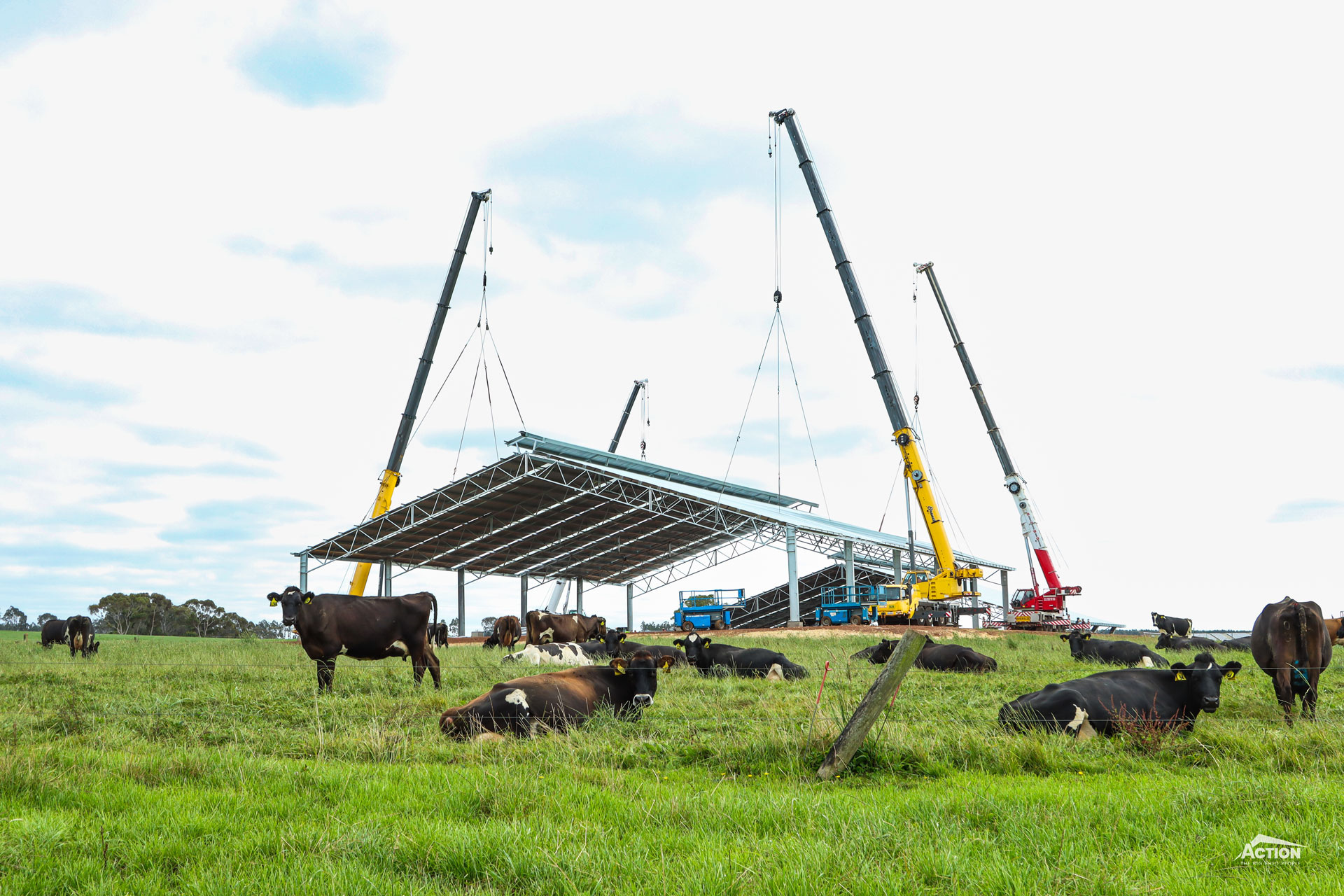What is the best way to test hay? How can I make sure the hay I feed my livestock has the required nutrients? Do I need to test my hay before I sell it?
We answer all these questions about testing hay in this article.
Hay is an important part of a livestock diet, and it’s crucial that farmers make sure they’re providing the best quality hay for their animals.
Good quality hay is essential for providing livestock with the nutrients they need to stay healthy and productive. Hay that is of poor quality, like mouldy hay, can contain toxins that can make animals sick, or it may not have enough nutrients to meet their needs. This can have repercussions for your livestock such as reduced growth, lower milk production, and even death in some cases.
So, how can you ensure you are providing your stock with quality hay?
Hay testing.
There are several methods of testing hay, and ultimately it comes down to how particular you want to be about the data you are looking for and how you plan to use the data. In this article, we discuss two of the best ways to test hay:
1. On-farm moisture testing
2. Hay sample lab testing
On-Farm Moisture Meter Testing
When it comes to hay production, one of the most important factors to consider is the hay’s moisture content. The ideal moisture content for hay varies depending on the type of hay and its intended use, but typically falls somewhere between 10-18%. If the hay has too much or too little moisture, it can be difficult to store and can even cause illness in livestock.
A moisture meter, like the one pictured, is an instrument that measures the amount of moisture in hay. You’ll need a hay moisture meter with a long probe, say, 50 to 60cm, that can go all the way to the core of the bale. This allows you to obtain moisture readings from the center, where most of the moisture is likely to be.
Another thing to bear in mind is that after hay has been baled, the internal density and stem-to-leaf ratio are frequently varied across the bale. As a result, it’s important to test a bale in several locations and average the results – especially if there are any high readings.
Lastly, a moisture meter can keep both your livestock and your hay shed safe! Moisture meter testing is a very common choice for hay growers and livestock producers alike, because the moisture content not only affects the nutritional value of hay, but it can also cause spontaneous combustion.
Laboratory Testing with Hay Samples
For a more in-depth analysis of your hay quality, you can send hay samples to a certified lab for testing. The lab will provide data on the nutritional value of the hay, as well as information on any toxins or contaminants that may be present.
This type of testing is especially important for hay that is being used for feed. Feed hay needs to meet certain nutritional standards in order to be safe and effective, and laboratory testing can help ensure that your hay is up to the mark.
As an example, Feed Central provides a full testing service through its globally recognized quality grading and quality assurance system.
This chart from Feed Central shows simple data to help interpret test results, but you can read the full article on their website here:
How To Interpret Your Feed Test – What The Parameters Really Mean? | Feed Central
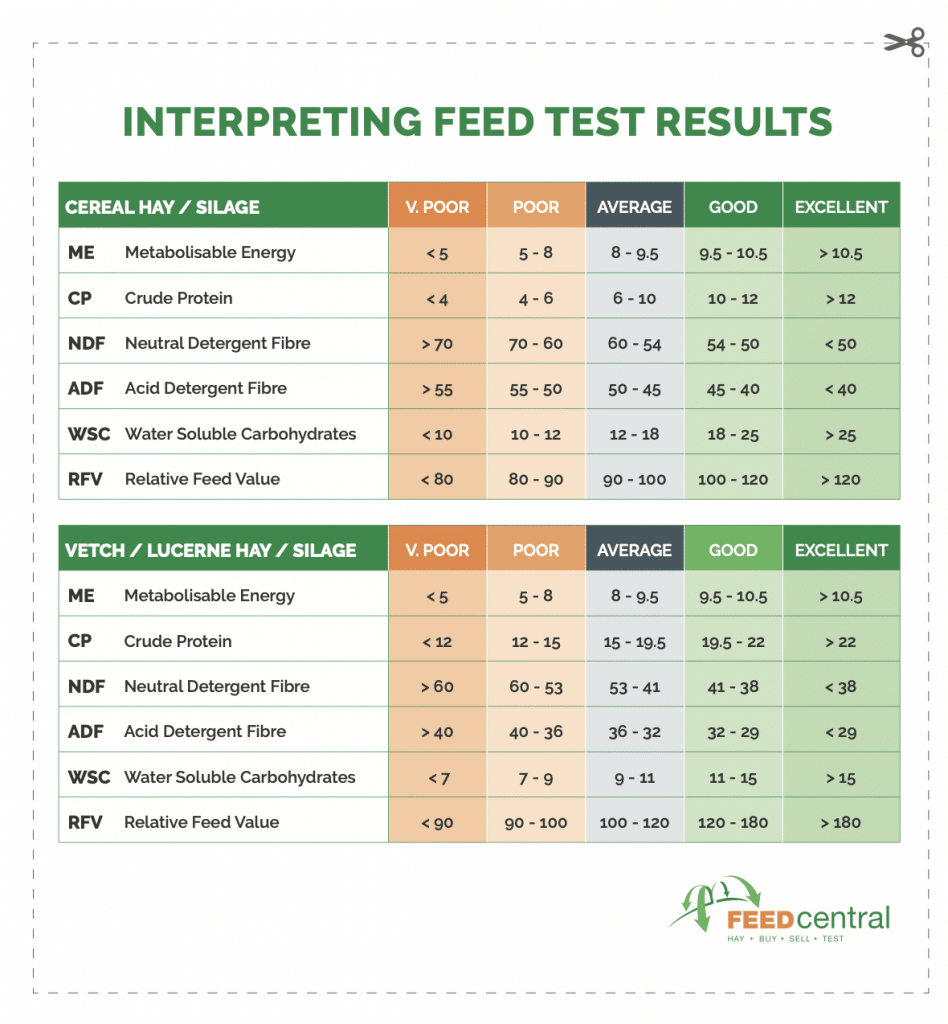
What Is The Best Way To Test Hay?
Hay testing is essential for hay growers, sellers, dairy farmers, feedlots and small scale farms, and they all have different testing requirements which will influence what is the best way to test their hay.
Lab testing hay is essential for hay growers selling to both local and export markets. Compared to a moisture meter, which simply measures moisture, lab test results provide buyers with an accurate picture of the quality of they hay helping them to make better informed buying decisions. It is not enough to just say that your hay is good quality, you need the data to back it up.
Similarly, dairies and feedlots need this kind of information and data to ensure the hay will help productivity and results.
While lab testing provides the most detailed data, don’t overlook the importance of regularly monitoring the moisture content of your hay – whether that is with a moisture metre, or a back-to-basics crow bar test. The moisture content of your hay can continue to change after baling, and if it is not stored correctly, can start to heat and then catch fire. Keeping an eye on the moisture content of your hay is a low-cost activity that could save you money (and stress!) in the long run.
So, while the best way to test hay depends on your data requirements, the best way to get an accurate and up-to-date representation of your hay quality may be using a hay moisture meter in conjunction with lab test resutls.
Frequently Asked Questions
Throughout this article we have mentioned spontenous combustion and mouldy hay and toxins, so we thought it would be a good idea to answer some of the frequently asked questions about these.
How do I stop hay from going mouldy?
While it may be impossible to have completely mould-free hay, there are preventative measures you can take to help stop hay from going mouldy. These include making hay correctly, be careful about the hay you buy and finally, storing hay correctly.
Learn more, here.
What is spontaneous combustion?
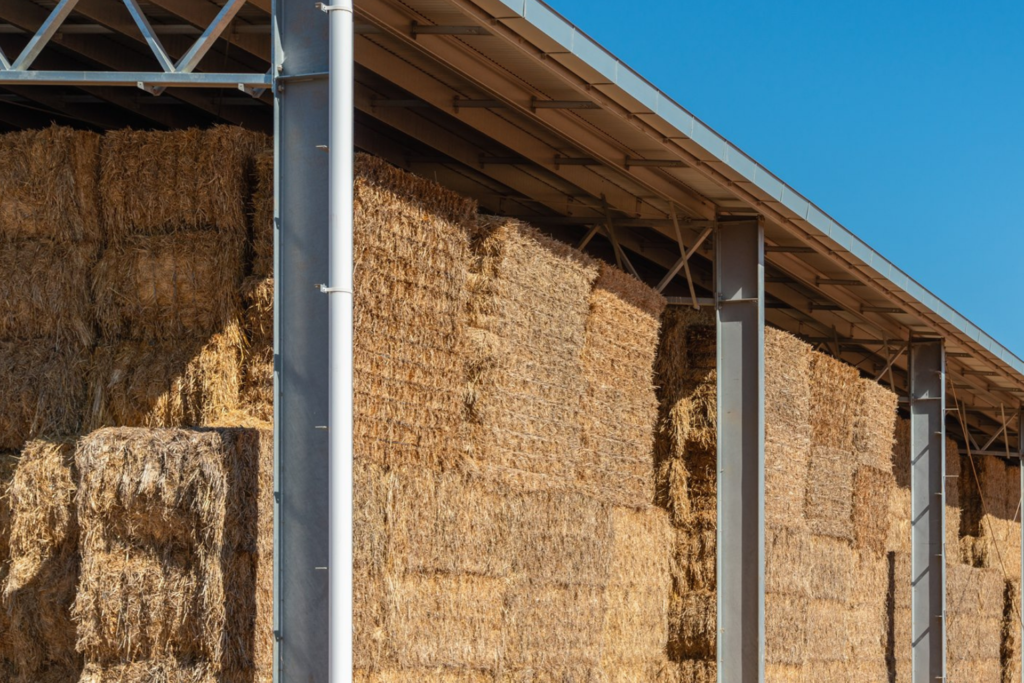
Overall, there are several methods of hay testing that you can use in order to get a better understanding of your hay’s quality.
On-farm moisture meter testing is a quick and easy way to get an overall idea of your hay’s moisture content, while laboratory testing with hay samples can provide more detailed information on the hay’s nutritional value and safety.
Whichever method you choose, hay testing is an important step in ensuring that your livestock is getting the best possible feed, or if you are selling hay it makes your hay an attaractive option for buyers when they know what they are going to get.
If you found this article helpful, you may also like this article; How To Test Baled Hay, which has more practical tips and suggestions for testing hay.

